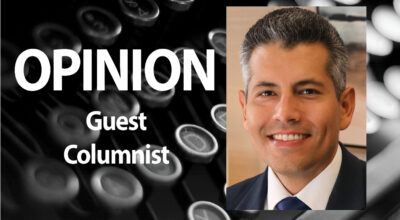SENATE FINANCE BEGINS BUDGET HEARINGS
Published 8:21 am Monday, January 30, 2017
The Senate Finance Committee began public hearings for the 85th Legislature this week, setting in motion a process that will result in billions of dollars in state and federal money being divided between all state agencies and public services. It’s going to be a harder task this session as budget writers have less revenue to use than last session, per the Comptroller’s revenue estimate released at the beginning of January. Finance Committee Chair Jane Nelson of Flower Mound opened the process on Monday by appointing special workgroups to concentrate to the two biggest slices of the state budget, health care spending and education.
The first would look at spending for public education, under the leadership of Senate Education Committee Chair Larry Taylor of Friendswood. Last July, the State Supreme Court denied the latest challenge to the constitutionality of the school finance system, but said in its decision that the current system only meets the minimum standards set out in the Constitution. Nelson wants something better. “We need to have a whole new method of school finance,” she said. “No more Band-Aids. We need to start over.” She directed Taylor and his workgroup to come up with a new system, one that is easier to understand, innovative and meets the needs of Texas students.
The second group, chaired by Senate Health and Human Services Committee Chair Charles Schwertner of Georgetown, would try to get a handle on skyrocketing growth in state health care spending, driven by Medicaid but also state employee and teacher pensions as well as correctional facilities. Nelson charged them with finding ways to increase cooperation between the various agencies overseeing these programs in order to share best practices and find cost savings.
Tuesday through Thursday, Senate Finance heard agency presentations on Article III of the budget, which contains appropriations for both public and higher education. That article is funded at $55 billion in just state non-dedicated revenue in the Senate base budget, including $2.6 billion for enrollment growth over the next two years, estimated at 165,000 new students.
For higher education, the committee is taking a hard look at spending that isn’t dedicated to educational purposes. Called special items, these are legacy expenditures at state universities, some dating back to the early 20th century, that may have never intended to become ongoing costs. “Some of the programs are really worthwhile, and have had value, some of them should’ve expired in the biennium in which they granted and yet have kept going for years, even generations,” said Senate Higher Education Committee chair Kel Seliger told his colleagues at Monday’s Finance meeting. “I would argue that some of them aren’t really special or exceptional at all.”
The base budget includes only $300 million for such programs, down from more than a billion two years ago. Nelson stressed to university officials that the amount was just a starting point for discussion, not a final amount. “Many of these items are worthwhile, but we need to look at every single one of them and ask ourselves: was this intended as start-up money or is it part of a continuing commitment.” She appointed another workgroup, chaired by Seliger, to consider all university special items submitted for funding to ensure they aren’t duplicative, truly benefit the public interest and, above all else, fulfill the core mission of higher education in Texas.
The Senate will reconvene Monday, January 30 at 2 p.m.





